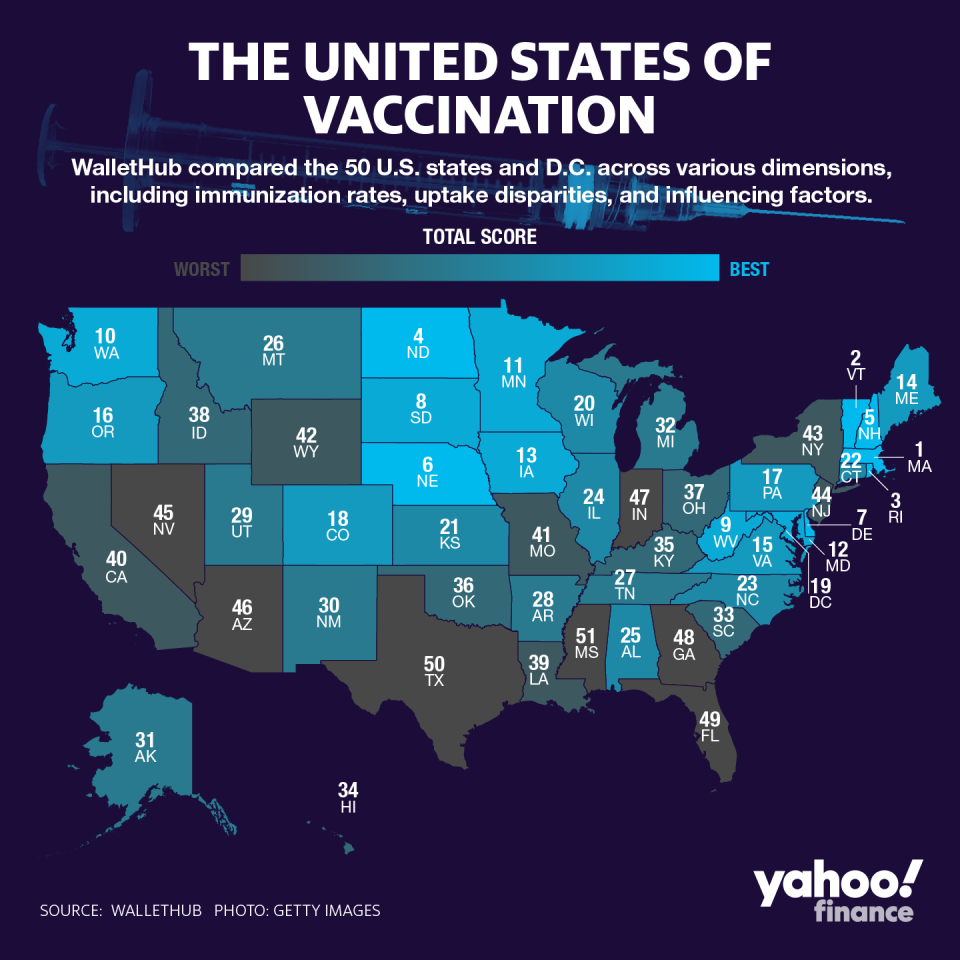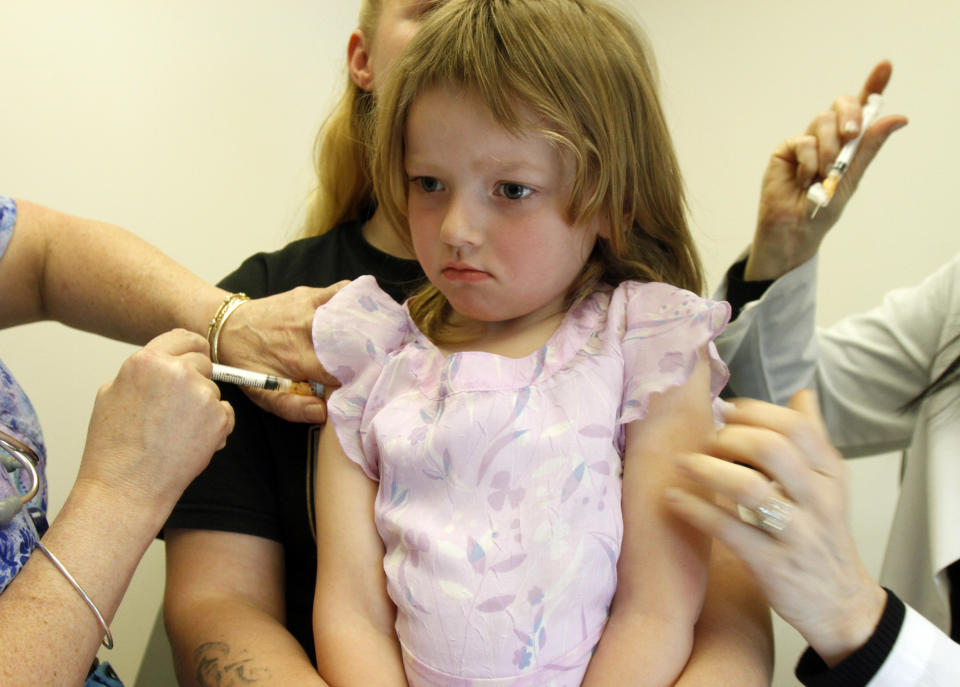The states where Americans are — and aren't — getting vaccinated
Vaccines are a hot button issue in the U.S., particularly with the rise of the anti-vaxx movement in recent years, and a WalletHub report found that some states are vaccinating at much higher rates than others.
Vaccines teach the body how to recognize pathogens — harmful microorganisms like bacteria or viruses that can cause disease — as well as produce antibodies in a safe manner to fight those pathogens when they arise in the body.
Massachusetts is at the top of states with the highest rates of flu shots among children between six months to 17 years old, the highest share of teens aged 13 to 17 years old with an updated HPV shot and the meningitis shot, and the lowest share of a civilian non-institutionalized population without health insurance coverage.
At the opposite end of the spectrum is the state of Mississippi, which has the lowest share of teens with an updated HPV shot and the meningitis shot, and the lowest share of adults with the tetanus shot and Shingles vaccine. (WalletHub leveraged data from the U.S. Census Bureau, Centers for Disease Control and Prevention, Health Resources and Services Administration, and other sources.)

Dr. Jesse Hackell, a practicing pediatrician at New York’s Pomona Pediatrics (a division of Boston Children’s Health Physicians), noted how several of these states are in the South.
“The states that refuse the Medicaid expansion from the Affordable Care Act have different amounts of funding to pay for vaccines,” he told Yahoo Finance. “A lot of them are red states.”
By expanding Medicaid, those with household incomes up to 133% of poverty would be able to enroll and be able to access the program’s benefits. But, there are 14 states that have refused to expand Medicaid — these include Mississippi, Alabama, Georgia, Florida, Tennessee, Texas, and Oklahoma. This can affect both availability and access to vaccines.
“Importantly, a vaccine protects not only the individual to whom it is administered, but also the entire population,” according to a Harvard explainer on vaccinations from 2016. “When the number of immunized individuals within a population reaches a critical threshold, herd immunity ... protects the entire population, even those who are not vaccinated are protected from disease.”
‘Availability should not be an issue’
Other states that vaccinate the least include Texas, Florida, Arizona, New York, and New Jersey, Louisiana, Oklahoma, and Kentucky.
Vaccine misinformation is part of the lack of vaccinations — there is an anti-vaxx movement that believes vaccines pose more harm than good. However, there are also policy issues at the root of these numbers.
“No child should be unable to be vaccinated,” Hackell said. “Availability should not be an issue, because the Vaccines for Children (VFC) program, covers kids who don’t have access to insurance.”

The VFC program is federally funded and allocated through the Centers for Medicare and Medicaid Services (CMS) to the CDC. In order for a child to be able to obtain a vaccine through the program, they must be younger than 19 years old and either Medicaid-eligible, uninsured, underinsured, American Indian, or Alaska Native.
“Vaccine availability may also be lower in non-pediatric practices, because there is no program for adults comparable to VFC for children,” Hackell said. “Affordability is an issue as well, with lower insurance coverage. And adults are not subject to the same kind of mandates as are children attending school — with limited exceptions, such as health care workers.”
Some states — like Rhode Island, Connecticut, and Massachusetts — are what’s called “universal purchase” states. This means that the states buy the vaccine and provide it for free to kids in that state.
“Universal purchase may eliminate some of the barriers in immunization,” Hackell said. “If getting vaccines and paying for it is not an issue, more kids are going to get it. It’s not going to be a question of what insurance they have or don’t have, or whatever it might be.”
However, “just because [vaccines] are available doesn’t mean that you can get them,” Hackell said. “Urban areas have more physicians and more providers available. Some of the rural areas don’t have as many. It does get back to the Medicaid expansion because the Medicaid payment rates are so much lower than private insurance and it’s hard to get physicians to participate in Medicaid, and therefore there’s no one available to give the vaccine so kids don’t have access even if the vaccine is available.”
Adriana is an associate editor for Yahoo Finance. Follow her on Twitter @adrianambells.
READ MORE:
'A victim of their own success': How vaccines became a casualty of misinformation in the U.S.
What is direct primary care? 'Think of a combination of Netflix and Costco'
Merck CEO on anti-vaccine movement: 'We have to counter some misinformation'
Read the latest financial and business news from Yahoo Finance
Follow Yahoo Finance on Twitter, Facebook, Instagram, Flipboard, SmartNews, LinkedIn, YouTube, and reddit.

 Yahoo Finance
Yahoo Finance 
